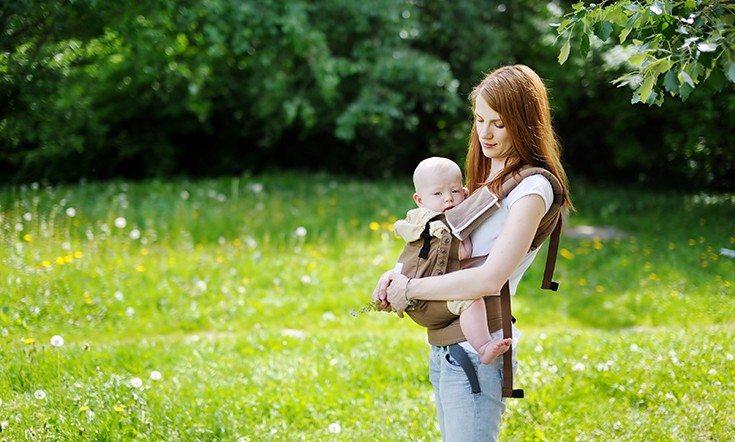

Baby wearing – that is carrying your baby using a carrier or sling – has become increasingly popular as the benefits of holding your baby close are more widely known.
Carrying your baby has been shown to help reduce colic, keeping babies calm and at ease as well as sleep easier.
It’s also super convenient for mum, who is able to get a few things done while baby feels safe, happy and secure at the same time!
But while baby wearing has a multitude of benefits, there can be risks if it’s not done properly.
Not all baby carriers are created equal and how you use them makes a big difference too.
The key issue is positioning – making the wrong choices can have a life-long impact on your baby and in some cases be dangerous so it’s important to do your research.
If you do decide to babywear – whether occasionally or in lieu of a pram, here are a few things to remember:
- Keep baby’s airway clear – Ensure baby remains in an upright position, so that you can monitor breathing and make sure that her chin is off her chest.
- Support baby’s head – When we carry a newborn, most of us are fairly conscious of their floppy heads and we’re careful to offer support – the same applies when placing a baby in a carrier or sling, make sure his head is completely supported.
- Support baby’s neck and back – Look for an ergonomic carrier which offers better support for your baby and will also be more comfortable for you. Keep things tight and compact and don’t let baby slump forward.
- Check for damage – Baby carriers can be particularly handy for travel and holidays which means they’ll be moved from place to place, thrown in the car or in the back of the pram, so it’s important to make sure there are no tears and or weak spots each time you use it.
- Position – According to the International Hip Dysplasia Institute, babies with dangling, straight legs are at risk of developing hip dysplasia. Your baby’s knees should be above his bottom, with legs spread in a squat position. Baby’s bottom and the tops of his legs should be fully supported by the carrier.
- Do your research – try before you by and ensure the carrier you choose meets safety standards. Check the internet for reviews and make sure the carrier is both comfortable for you and your baby. Also check the age and weight suitability of the carrier you choose and ensure it meets your needs.























